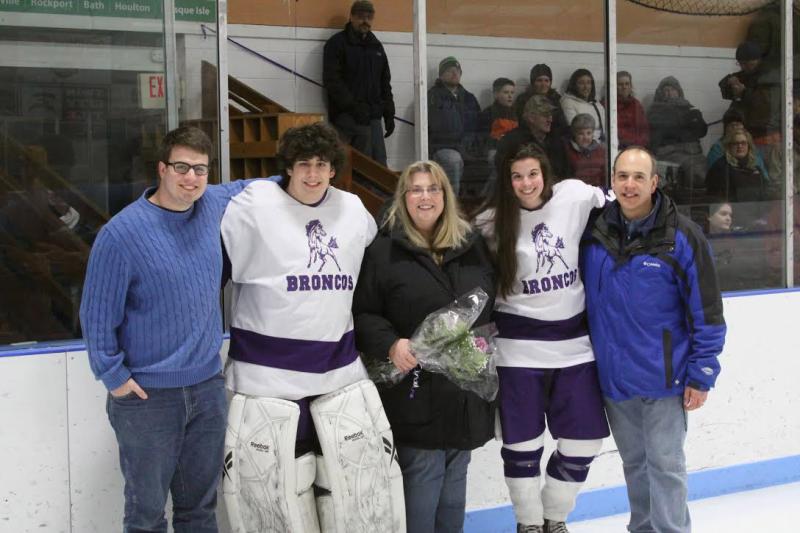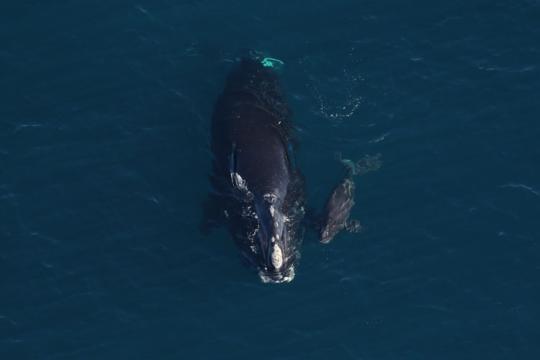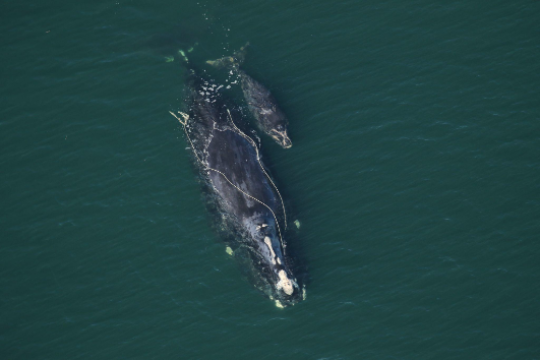We continue a new series to introduce the people who work at the Northeast Fisheries Science Center (NEFSC). Each month we will feature a new "face" from the Center's five laboratory locations—Orono, ME, Woods Hole, MA, Narragansett, RI, Milford, CT, and Sandy Hook, NJ - and share with you a bit about who they are, what they do at the Center, and what they enjoy doing in their spare time.
Where did you grow up?
I grew up in Gloversville, New York, a small city in the foothills of the Adirondack Mountains. I had a lot of freedom to explore the woods and streams outside of town. I used to bike to nearby streams all summer long. On the weekends, my dad would take me fishing to spots further away. We focused on all kinds of fish but especially brook and brown trout. Those early experiences fostered my interest in fish and love of rivers and mountains.
Where did you go to school and what subject did you get your degree(s) in?
After graduating from Gloversville High School, I headed north to the State University of New York at Plattsburgh to pursue a biology degree. I was not sure exactly what I wanted to do—I told my parents genetics or maybe something to do with fish. The campus, located less than an hour south of Montreal, was at the northern end of the Adirondack Mountains. The Saranac River flowed right through campus and it was there that I caught my first steelhead, a large lake-run rainbow trout. I am not sure who hooked who now!
As an undergrad, I took an ecology course with Dr. Gerhard Gruendling (followed up by freshwater ecology then marine ecology). I also got an opportunity to work with biologists from the U.S. Fish and Wildlife Service on sea lampreys and then the New York Department of Environmental Conservation on rainbow smelt. It was at this point that I really learned about fisheries biology as a profession.
I then headed off to Michigan State University for what would be my most formative experience. At MSU, Dr. William Taylor selected me to work on a pink salmon population dynamics project for my master’s degree. Bill would quickly become more than a mentor. I had opportunities to work on all aspects of becoming a scientist, from competing for grants to publishing in journals. My doctoral work was focused on competition between brown trout and steelhead. At MSU, I worked on over a dozen salmon rivers and three Great Lakes as I completed both an M.Sc. and Ph.D in Fisheries and Wildlife. Upon graduation, I knew that I wanted to work for a natural resource agency and be able to focus on salmon or trout.
Tell us a little about how you came to the Science Center.
While I was writing my dissertation, I saw an advertisement in Science for three positions at the Center and one of them was focused on Atlantic salmon. It seemed like a great opportunity. On my last day at MSU, I picked up my bound thesis copies and headed off to Woods Hole. Wendy Gabriel was my first supervisor, and I credit her with teaching me how to survive as a scientist in a federal bureaucracy. She gave me exceptional guidance and the freedom to try different research approaches. Soon after I started, NOAA was petitioned to list Atlantic salmon under the Endangered Species Act. I was tasked with working on a Status Review with Mary Colligan at the Greater Atlantic Regional Fisheries Office (GARFO) in Gloucester, Mass. We hit it off right away and survived the listing process, new petitions, lawsuits, and a National Academy of Sciences Research Council review of our work. The salmon program grew from there, and Mary and I worked closely to integrate the science and management as we went from a team of two to a larger integrated team of GARFO and Center staff with a Field Station in Orono, Maine.
What do you do at the Science Center?
I wear several hats in my job. As a Supervisory Research Fishery Biologist, I am a player-coach. My recent efforts involved working with larger inter-agency teams to foster a better understanding of telemetry as a research tool and climate impacts on fish population productivity. Currently, I am working on improving the science-management information flow by trying to better link the distribution of habitat to overall fish production. This approach is leading to new collaborations with scientists that work on Pacific salmon. I am fortunate to guide a great team – the Atlantic Salmon Ecosystems Research Task. In Maine, four scientists work on smolt production, smolt-postsmolt marine ecology, and predators of sea run fish. In Woods Hole, four scientists work on dam impacts, salmon age-growth, and Labrador Sea/Greenland ocean ecology. Keeping up with all that they do is exciting as we continue to explore factors that limit Atlantic salmon production and identify solutions. My final hat is that of Station Director for the Maine Field Station in Orono. Again, I am fortunate to have a great support staff that helps me manage everything from budgets to building operations.
What do you like most about your job?
There are three things that I really like about my job at NOAA. The first is the ability to work with an interagency team that has diverse skillsets and approaches but a common shared mission – saving Atlantic salmon and their ecosystems. We do not always agree on approaches, but our core NOAA team is passionate and always working towards a common goal. The second is the encouragement that I have always gotten at NOAA to collaborate with other salmon scientists, and particularly students, from around the globe. Finally, I love the commitment of the non-government organizations and really enjoy my role as a science advisor to groups like the Downeast Salmon Federation and Project SHARE.
What are some of your hobbies?
As my three kids were growing up, they rekindled my interest in ice hockey. I was very involved in local youth hockey and did quite a bit of coaching. I also got back into playing. The kids are now all off to college, but I still play weekly (October to March) with a great group of men and women from around the area. I also enjoy travelling with my wife and especially visiting historical sites, museums, and national parks. However, right now our favorite destination is Pittsburgh, where our twins are getting ready for their senior year at Pitt. My favorite hobby is hunting. I didn’t start hunting until I moved to Michigan but soon became an avid deer and upland bird hunter. Moving to Maine, my sons helped to broaden my interests to include waterfowl and, of course, moose. I don’t get out as much as I would like to, but I really enjoy being out in the woods and fields with my family and friends. For both hunting and fishing, I really enjoy being an active participant in the ecosystem, not just a spectator. I feel both sports bring me a richer appreciation of fish and wildlife habitats.






